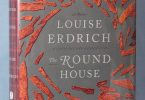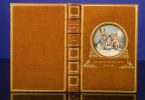Let’s say that you decide to write that novel you’ve always played around with…
It is time to tell the world about that torrid, dangerous romantic summer that you had in Costa Rica years ago, but you don’t want to incriminate yourself or endanger the job of that really cute bartender. Or perhaps you feel that your political protests in college could make a great setting for a story, but would be even better if it ended with you being dramatically hauled away in cuffs by the campus police while everyone else cheered you on.
It looks like this would be a great time for the semi-autobiographical novel, or the “Roman à clef.” This very sexy French literary phrase translates as “novel with a key,” alluding to the attentive reader’s ability to uncover the novel’s secret truths hidden behind a façade of fiction. Authors writing roman á clef often change the names or appearances of the real people that influenced the story to recognizable but completely fictional characters. This serves to keep the author from incurring potentially expensive libel charges.
The term and concept of roman á clef is attributed to Madeleine de Scudery in the 1600’s, as she wrote many popular tales that alluded to public figures and politicians, but often set in the Orient with the characters being given names of mythological or historical figures.
There are examples of the roman à clef that predate the naming of the concept, though. Even Dante’s, The Divine Comedy is considered dangerous ground as he put several political figures of his day in his fictional account of Hell. From the 1700’s on, roman à clef has been a popular form throughout the world’s literature to share criticism of class structure and politics, share embarrassing or legally dangerous tales, and to satirize popular figures.
Here are some other well-known examples of popular Roman á Clef:
| 1 |  |
The Sun Also Rises by Ernest Hemingway |
|
| The Sun Also Rises is the first major novel by Ernest Hemingway. The story centers around a group of American and British expatriates who travel to Pamplona to watch the running of the bulls and the legendary bullfights. The setting was unique and memorable, presenting the seedy café life of Paris, and the Pamplona festival, with a middle section devoted to fishing in the Pyrenees. On the surface, it is a love story, but the main theme is the notion that the decadent lost generation was irretrievably damaged by the war. | |||
| 2 |  |
The Dharma Bums by Jack Kerouac |
|
| The Dharma Bums is a 1958 novel by Beat Generation author Jack Kerouac. The semi-fictional accounts in the novel are based upon events that occurred after On the Road. The main characters are based on Kerouac and Gary Snyder, a poet who helped introduce Kerouac to Buddhism in the mid-1950’s.
The book largely concerns duality in Kerouac’s life and ideals, examining the relationship that the outdoors, bicycling, mountaineering, hiking and hitchhiking through the West had with his “city life” of jazz clubs, poetry readings, and drunken parties. The novel also gives an account of the legendary 1955 Six Gallery reading, where Allen Ginsberg gave a debut presentation of his poem “Howl” (changed to “Wail” in the book), and other authors such as Snyder, Kenneth Rexroth, Michael McClure, and Philip Whalen performed. |
|||
| 3 |  |
The Bell Jar by Sylvia Plath |
|
| The Bell Jar is writer and poet Sylvia Plath’s only novel, which was originally published under the pseudonym “Victoria Lucas” in 1963. The novel is semi-autobiographical with the names of places and people changed.
The book is often regarded as a roman à clef, with main character Esther Greenwood’s descent into mental illness paralleling Plath’s own experiences with what may have been either bipolar disorder or clinical depression. Plath committed suicide a month after its first publication. |
|||
| 4 |  |
Fear and Loathing In Las Vegas by Hunter S Thompson |
|
| Fear and Loathing in Las Vegas: A Savage Journey to the Heart of the American Dream is a novel by Hunter S. Thompson, illustrated by Ralph Steadman. The book is a roman à clef, rooted in autobiographical incidents.
The story follows its protagonist, Raoul Duke, and his attorney, Dr. Gonzo, as they descend on Las Vegas to chase the American Dream through a drug-induced haze. The novel first appeared as a two-part series in Rolling Stone magazine in 1971, was printed as a book in 1972, and was later adapted into a film of the same name in 1998 starring Johnny Depp and Benicio del Toro. |
|||
| 5 |  |
Little House On the Prairie by Laura Ingalls Wilder |
|
| Little House on the Prairie is the third novel in the Little House series by Laura Ingalls Wilder, and it was published in 1935.
The book covers the Ingalls family as they tried to settle on the wide Kansas prairie near the town of Independence. They suffer from malaria and some devastating crop failures, as well as keeping a front row view of the drama of the Osage tribe losing their lands to the Ingalls and all of the other new settlers on the prairie. It follows them as they leave the prairie in search of safer, more productive living space. |
|||







A roman a clef is a story that contains events that happened, conceals the identity of these real people by changing their names.